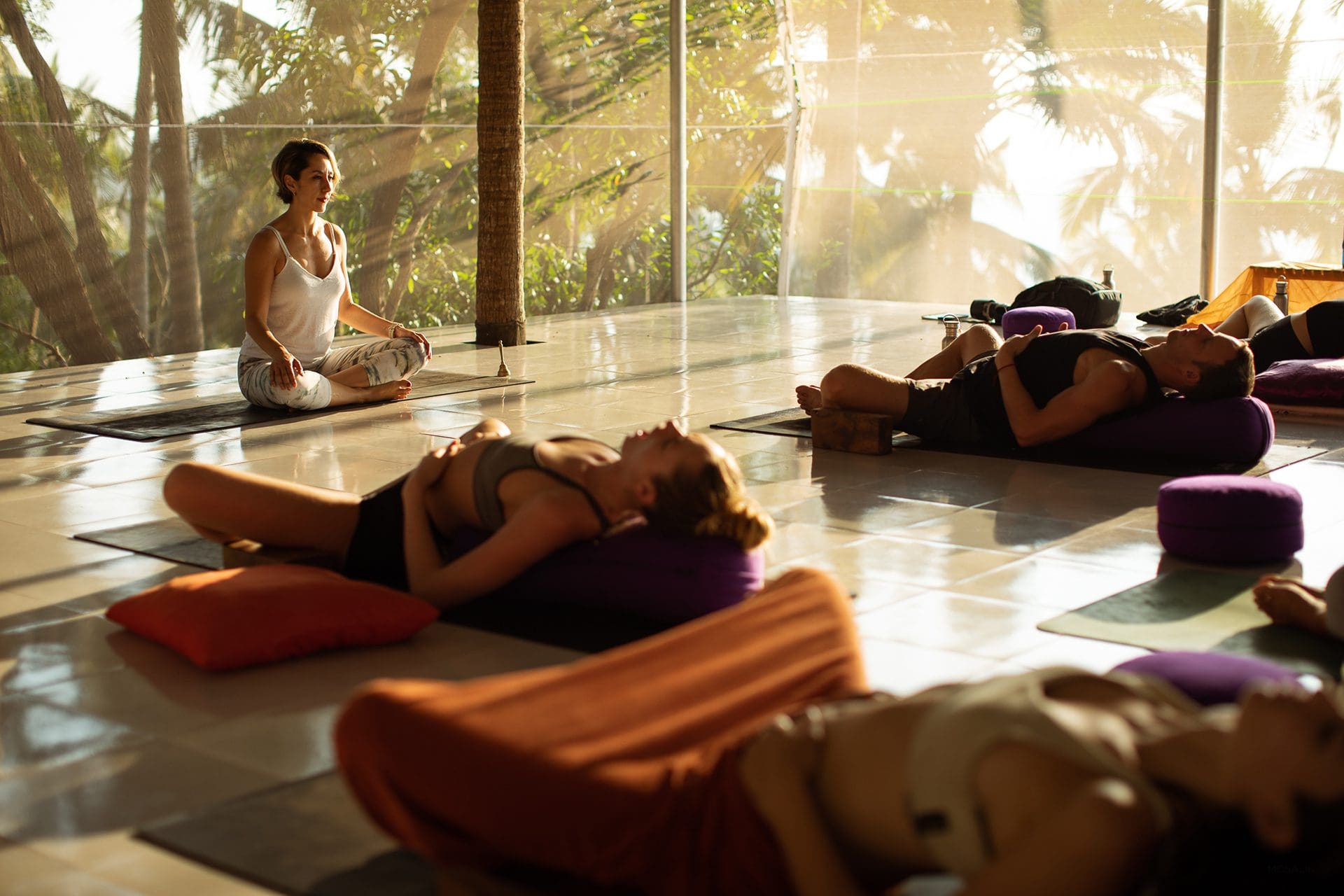What to Expect from a Residential 200-hour Yoga Teacher Training Course?
Putting your life on hold to do a 200-hour yoga teacher training program? Wondering if it will be worth it? Will the course cover everything you are expecting? We can promise you this – the residential 200-hour yoga teacher training course will go beyond your expectations and more. :) Yes, you will probably leave the program feeling sore, tired and pushed beyond your limits, but you’ll also be feeling refreshed, lighter and happier. Let’s look at what you can expect from a 200-hour yoga teacher training.

- Intensive: To become a registered yoga teacher (RYT), you have to start with the basic 200-hour yoga teacher training course. A residential RYT 200 is normally about 3-4 weeks. During this time you will follow a daily routine that consists of both physical practices as well as theory. Teachers will guide you to challenge your limits during yoga asana practice by holding postures and to achieve the alignment that works for you. You will go through intense warm-ups, Surya Namaskar and preparatory poses to open up the hips, improve back flexibility and build strength. You might even end up feeling sore and stiff, especially if you are not used to an intense physical routine. It is best to prepare yourself for the 200-hour YTTC by joining yoga classes or exercising regularly before you join the program. More importantly, keep an open mind, stay positive and determined. However, if you feel like it is too intense and is taking a toll on your body, inform your teachers immediately and they will suggest what you should do.
- A holistic learning: Don’t worry, you will do a lot more than learn yoga asanas. A 200-hour yoga teacher training includes modules on Pranayama (breathing techniques), meditation, Yoga Nidra, Mudras (gestures), Bandhas (locks), Shat Kriyas (the six cleansing techniques) and more. Yoga theory and philosophy topics include origins of yoga, styles of yoga, vedic texts, the eight limbs of yoga, anatomy and physiology, and more. You may not need to remember all the names and concepts immediately. Your teachers will guide you through what you do need to remember (especially for your exams).
- Yoga anatomy and physiology: This one scares many. But you should know about it because it is an integral part of a YTTC. Yoga anatomy and physiology will help you understand alignment in yoga postures, heighten your awareness of how a posture should feel and how your breath can benefit your pose and progress. You will only learn what is relevant to you from a yoga perspective – how yoga benefits the different body systems, the impact on the muscles and connective tissue, and the nervous system, among others. A good school will break down the information in a way that helps you understand and absorb this easily.
- A full-on schedule: Given that your daily routine will be packed with various classes, you can expect a full-on schedule throughout the course. Some days might feel long, but you will get personal time to restore and relax. Try not to get too worried about the schedule or how you will cope. Yoga is meant to de-stress you, and not the opposite. Simply immerse yourself in the program. You will finish having grown as a practitioner and individual.
- Personal time: While your daily routine will be intense, you will get personal time for yourself as well. There will be time for self-study, bonding with your batchmates and more. Sampoorna Yoga is located in the beautiful city of Goa in south India. So when you have time off, you can venture to the beaches with your fellow-yogis, take in nature and the simplicity of life around you. A prominent goal of a yoga course is to discover yourself and connect with your inner-self. When you immerse yourself in a course like this, you will find this self-discovery comes easily to you.
- Stepping out of your comfort zone: You will most likely attend the residential 200-hour YTTC on your own, stepping out of your comfort zone. You will be going through a transformative journey with people you have just met. You will also switch off from your daily responsibilities and to-do lists, allowing you to slow down, breathe in the powerful energy around you, while improving your mental and physical strength and well-being. It might take you a few days or a week to embrace your new routine and life at the shala, but you’ll begin to love it after that.
- Exam time: To become a certified yoga teacher you will have to complete the exams at the end of your course. Yoga Alliance accredited schools, like Sampoorna Yoga, maintain a standard structure for exams. Most often, this includes practical and theory exams. You might also be asked to create your own sequence and teach a small group. Don’t worry, you will get sufficient time to study and practice for your exams.
- A global community: Attending a residential yoga teacher training program at a school like Sampoorna Yoga will allow you to make friends for life. You will be learning and growing with a global community of supportive yogis. You will go through this transformational journey together, allowing you to build strong bonds that last a lifetime.
What does it take to become a Yoga Teacher/ Instructor? Take a look.

Sampoorna Yoga’s school at Agonda, Goa, offers first-class facilities with comfortable accommodation, and Sattvic,healthy and nutritious food, ensuring you have everything you need to be comfortable, energized and balanced during your stay. You will finish the course feeling motivated to carry home the learning and new lifestyle you have developed, while also having progressed immensely, physically, mentally and emotionally.

